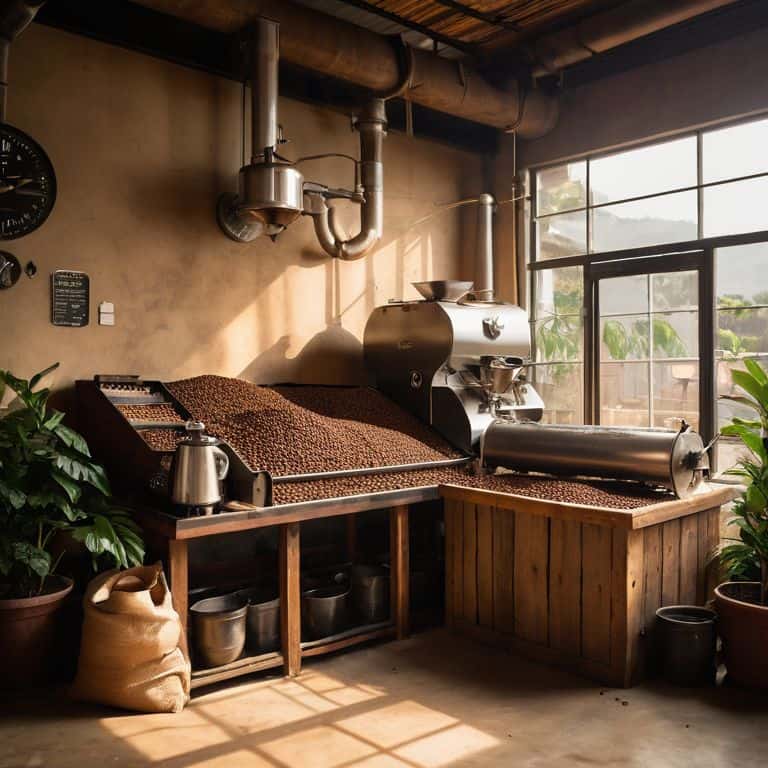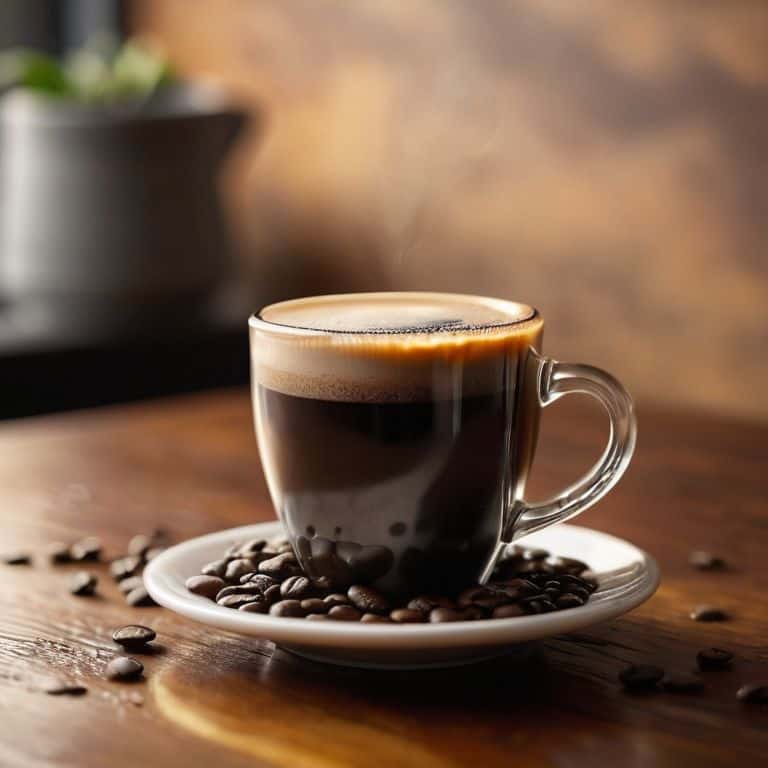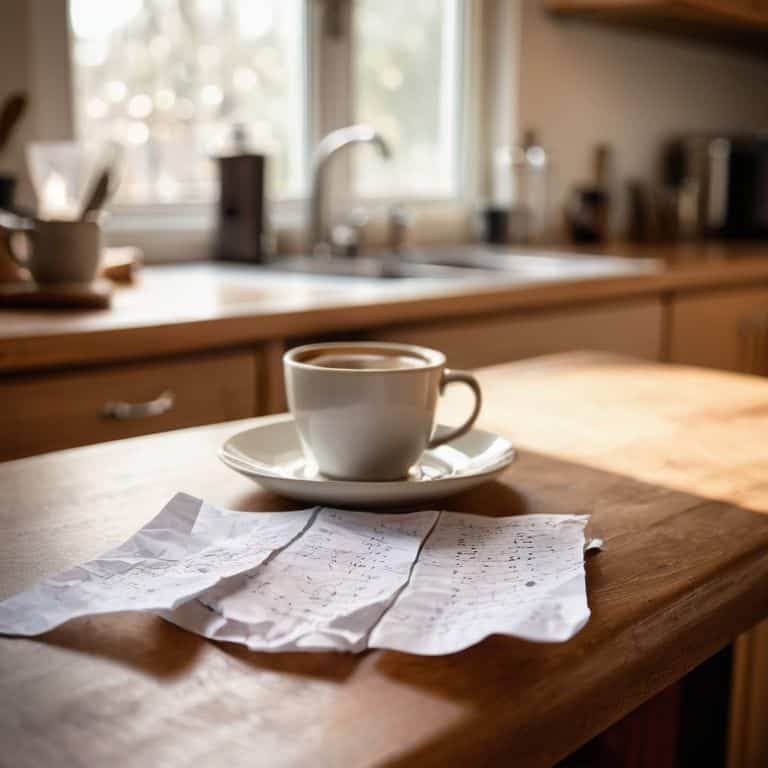I still remember the day I stood in front of my coffee bar, staring at my pour-over and French press brewers, wondering which one would bring out the best flavor in my freshly roasted Ethiopian Yirgacheffe. The pour-over vs french press flavor debate has been a longstanding one among coffee enthusiasts, with each side sworn to its preferred method. As someone who’s spent years traveling to coffee farms and developing custom roast profiles, I’ve had my fair share of both brewing methods. But what really sets them apart, and which one is worth your time and coffee beans?
As a certified Q Grader and specialty coffee buyer, I’m here to give you the no-nonsense lowdown on the pour-over vs french press flavor face-off. I’ll share my personal experience and expert knowledge to help you make an informed decision. In this article, I’ll dive into the nuances of each brewing method, highlighting the pros and cons of each, and provide you with a clear understanding of what to expect from your coffee. My goal is to help you discover the best way to bring out the unique characteristics of your favorite coffee beans, whether you’re a pour-over aficionado or a French press fan. So, let’s get started and explore the world of coffee beyond the hype.
Table of Contents
Pour-Over
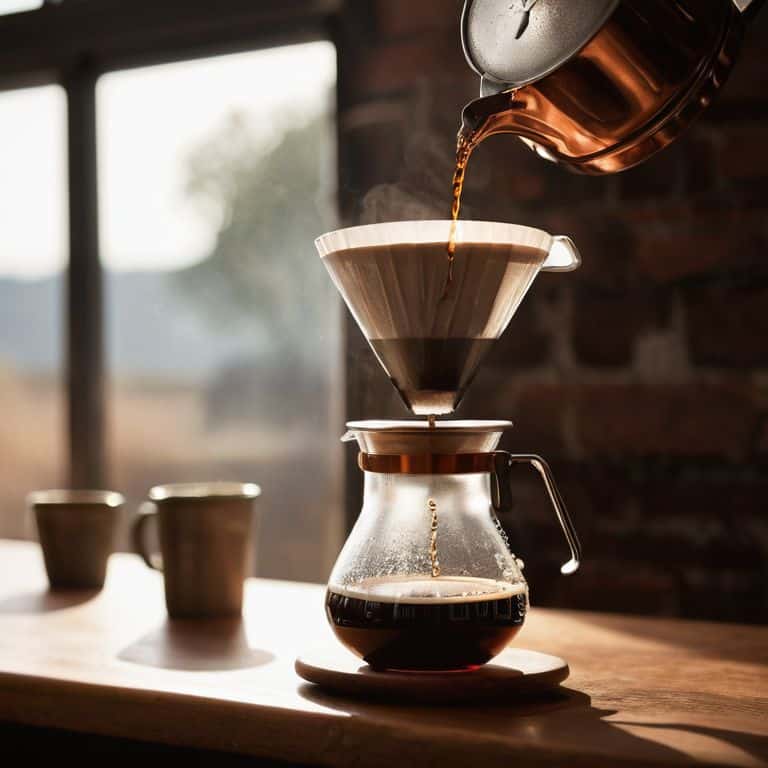
Pour-over is a manual brewing method that involves slowly pouring hot water over ground coffee beans in a filter, allowing for a clean and nuanced extraction of flavors. The core mechanism of pour-over brewing lies in its ability to precisely control the water flow, which is its main selling point, as it enables users to customize their brewing process to suit their taste preferences. This level of control is what sets pour-over apart from other brewing methods, making it a popular choice among coffee enthusiasts who value flavor clarity.
I still remember the first time I tried pour-over brewing – it was like a revelation for my senses. The delicate balance of flavors that pour-over brewing achieves is unparalleled, and it’s what makes it so special. As someone who’s passionate about coffee, I can appreciate the way pour-over brewing brings out the subtle notes in a coffee, allowing me to experience the full range of its flavor profile. Whether I’m tasting a new coffee or revisiting an old favorite, pour-over brewing always seems to reveal something new and exciting.
French Press
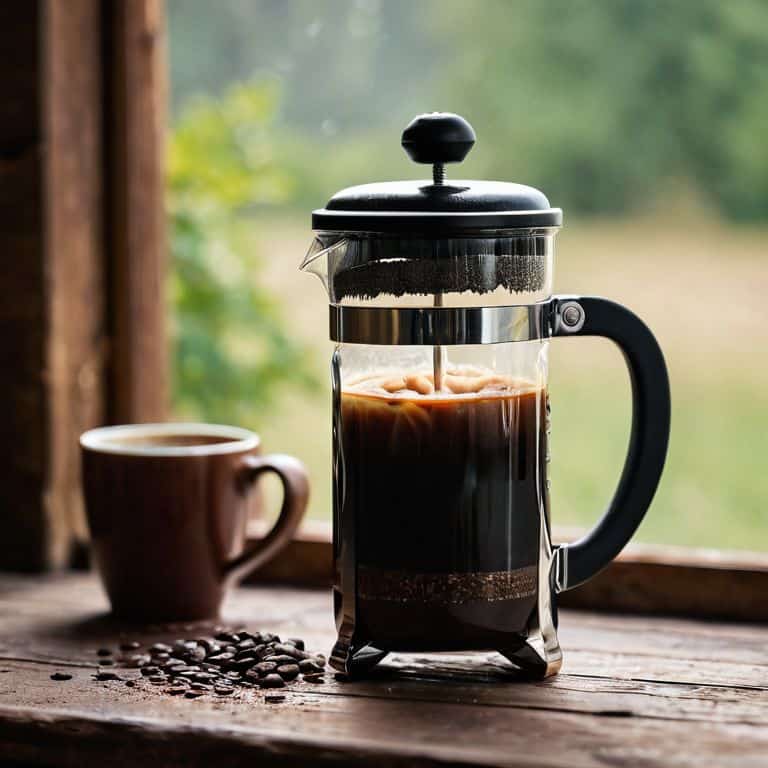
French press, also known as a cafetière or coffee press, is a brewing method that involves steeping coarse coffee grounds in hot water and then pressing the grounds to the bottom of the container to separate the liquid, resulting in a rich and full-bodied coffee. The main benefit of French press is its ability to produce a coffee with immersive body, as the coffee grounds are in contact with the water for an extended period, allowing for a more intensive extraction of solids. This makes French press a great choice for those who enjoy a hearty and satisfying cup of coffee.
As a coffee expert, I have a deep appreciation for the way French press brewing can bring out the hidden depths of a coffee. The velvety texture that French press brewing achieves is unmistakable, and it’s what makes it a staple in many coffee lovers’ daily routines. Whether I’m sipping on a bold and smoky coffee or a smooth and fruity one, French press always seems to add a layer of complexity and sensory delight that’s hard to resist.
Head-to-Head Comparison: Pour-Over vs French Press Flavor
| Feature | Pour-Over | French Press |
|---|---|---|
| Price | $20-$50 | $20-$100 |
| Key Feature | Manual drip process | Immersion brewing |
| Best For | Delicate, nuanced flavors | Rich, bold flavors |
| Grind Size | Medium-fine grind | Coarse grind |
| Brew Time | 3-4 minutes | 4-5 minutes |
| Caffeine Level | Medium | High |
| Cleanup Ease | Easy | Moderate |
Pour Over vs French Press Flavor

When it comes to the pour-over vs french press flavor debate, the flavor profile is crucial in determining which method yields the best results. As a coffee connoisseur, I can attest that the flavor of a cup of coffee is what sets it apart from a mere beverage to an experience.
In a head-to-head analysis, pour-over and French press brewing methods produce distinct flavor profiles. Pour-over brewing allows for a cleaner extraction, resulting in a brighter acidity and more nuanced flavor notes. On the other hand, French press brewing produces a bolder flavor, with a heavier body and more pronounced bitterness.
The practical implications of these differences are significant. Pour-over brewing is ideal for those who prefer a more refined flavor, while French press is better suited for those who enjoy a richer cup. In conclusion, when it comes to flavor, I declare pour-over the winner in this category, as it allows for a more precise control over the brewing process, resulting in a more complex and nuanced flavor profile.
Key Takeaways: Pour-Over vs French Press
I’ve found that pour-over brewing brings out the nuanced, bright notes in lighter roasts, while French press excels at extracting the rich, bold flavors from darker roasts
The body and texture of the coffee differ significantly between the two methods, with pour-over yielding a cleaner, more tea-like cup and French press producing a thicker, more velvety texture
Ultimately, the choice between pour-over and French press comes down to your personal taste preferences and the type of coffee you’re brewing – but with a little experimentation, you can unlock a world of flavor with either method
The Flavor Verdict
For me, the pour-over vs French press flavor debate is about more than just taste – it’s about the story each brew tells, with pour-over whispering nuances of its origin and French press boldly proclaiming its richness, each a world apart yet both undeniably captivating.
Amelia Rose
The Final Verdict: Which Brewing Method Reigns Supreme?
As I reflect on my journey to compare pour-over and French press brewing methods, I’m reminded that the flavor profiles of these two techniques are fundamentally different. The pour-over method yields a cleaner, brighter cup, while the French press produces a richer, more full-bodied one. This distinction is crucial, as it directly impacts the overall tasting experience. For instance, the pour-over’s delicate acidity and nuanced flavors make it ideal for showcasing high-quality, single-origin beans. In contrast, the French press, with its velvety texture and deep flavors, is better suited for blends or beans with a bolder character.
Ultimately, the choice between pour-over and French press comes down to your personal taste preferences and coffee goals. If you’re a coffee connoisseur seeking a precise, elegant cup, pour-over is likely the better choice. On the other hand, if you prefer a heartier, more rustic brew and don’t mind a bit of sediment, French press is the way to go. As someone who’s passionate about specialty coffee, I appreciate the unique strengths of each method and enjoy them in different contexts – but if I had to pick one, I’d say pour-over is the clear winner for its ability to bring out the best qualities of exceptional beans.
Frequently Asked Questions
What are the key factors that contribute to the unique flavor profiles of pour-over and French press coffee?
For me, it’s all about the nuances of water temperature, coffee-to-water ratio, and steeping time. With pour-over, the slow drip allows for a cleaner extraction, while French press’s immersion method brings out more oils and sediments, resulting in a richer, fuller-bodied flavor.
How do the brewing times and temperatures of pour-over and French press methods impact the final flavor?
When I brew, I’ve found that pour-over’s slower drip and lower temps bring out nuanced flavors, while French press’s steeping and higher temps amplify bold notes – it’s a trade-off between complexity and punch, really.
Are there any specific coffee bean origins or roasts that are better suited to one brewing method over the other in terms of flavor?
I’ve found that Ethiopian beans shine in pour-over, showcasing their bright acidity, while French press brings out the rich, smoky notes in a Brazilian roast – it’s all about matching the bean’s character to the brew method.

